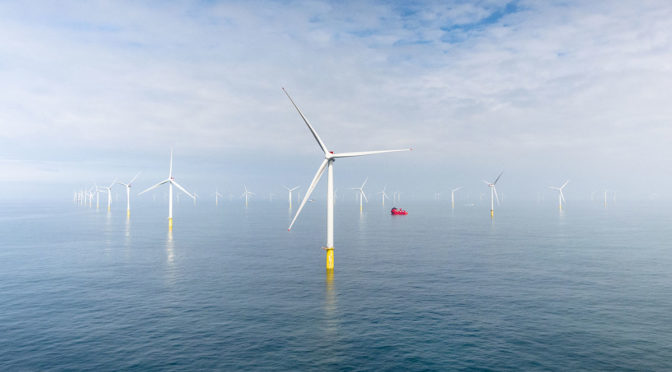Offshore floating wind farms are rapidly emerging as a viable solution to harness the power of deep-water winds and contribute to the global shift towards renewable energy. As the world grapples with the effects of climate change and the urgent need to reduce greenhouse gas emissions, the development of innovative and sustainable energy sources has become a top priority. Offshore floating wind farms offer a promising alternative to traditional onshore wind turbines, with the potential to generate clean, renewable energy at a large scale and significantly reduce our reliance on fossil fuels.
The concept of offshore floating wind farms involves the installation of wind turbines on floating platforms, which are anchored to the seabed using mooring lines. This allows the turbines to be placed in deeper waters, where winds are typically stronger and more consistent than those found closer to shore. By tapping into these powerful wind resources, floating wind farms can generate more electricity than their onshore counterparts, making them an attractive option for countries looking to expand their renewable energy portfolios.
One of the key advantages of offshore floating wind farms is their minimal impact on the environment and local communities. Unlike onshore wind farms, which can be subject to strict zoning regulations and often face opposition from residents due to concerns about noise, visual impact, and potential harm to wildlife, floating wind farms can be located far from populated areas, reducing the potential for conflict. Additionally, the floating platforms used in these installations have a smaller footprint than traditional fixed-bottom structures, minimizing the disturbance to marine ecosystems and allowing for easier decommissioning at the end of the turbines’ operational life.
The development of offshore floating wind farms has been driven by significant advancements in technology and engineering, which have made it possible to construct larger, more efficient turbines capable of withstanding the harsh conditions found in deep-water environments. These innovations have also led to a reduction in the cost of floating wind energy, making it increasingly competitive with other forms of renewable energy. As a result, several countries, including the United States, the United Kingdom, and Japan, have begun investing heavily in the research and development of floating wind technology, with the aim of deploying large-scale commercial projects in the coming years.
Despite the numerous benefits of offshore floating wind farms, there are still several challenges that must be addressed in order to fully realize their potential. One of the primary obstacles is the high upfront cost of developing and installing floating wind infrastructure, which can be significantly more expensive than traditional onshore wind projects. However, as the technology continues to mature and economies of scale are achieved, it is expected that these costs will decrease, making floating wind energy more accessible to a wider range of countries and investors.
Another challenge facing the offshore floating wind industry is the need for specialized vessels and equipment to install and maintain the turbines, as well as the development of advanced weather forecasting and monitoring systems to ensure the safety and efficiency of operations. As the sector continues to grow, it is likely that these logistical and technical challenges will be addressed through ongoing research and collaboration between industry stakeholders, governments, and research institutions.
In conclusion, offshore floating wind farms represent a promising and innovative solution to harness the power of deep-water winds and contribute to the global transition towards renewable energy. As technology continues to advance and costs decrease, it is likely that we will see a significant expansion of floating wind projects around the world, helping to reduce our reliance on fossil fuels and combat the effects of climate change. With the right investment, research, and collaboration, offshore floating wind farms have the potential to play a critical role in shaping a more sustainable and resilient energy future.


